Written by Patrick Xavier Horrigan
The third in a series of avant-garde performances, in this instance showcasing young Canadian filmmakers and composers, Synesthesia III was a captivating event that worked to redefine how we perceive film and music. Presented by FAWN Opera and New Music, in collaboration with The Seventh Art, the performance illustrated some of the innovative and ambitious minds at work in Toronto’s contemporary art scene.
Walking into the Brockton Collective performance studio primed the audience for the evening ahead. The multicolored lights streaming across concrete surfaces highlighted the industrial character of the space and made me feel as though I was entering one of Andy Warhol’s factory parties – with a 21st-century techno-twist. The atmosphere was casual and engaging, patrons were able to chat with the artists/creators, share a drink, and enjoy some PWYC popcorn!
As the venue filled up the audience members packed in, inhabiting whatever space was available. Once the performers gathered a hush fell over the crowd and the audience’s anticipation was palpable. After brief introductions by artistic director Amanda Smith (FAWN) and host Christopher Heron (The Seventh Art), the filmmakers presented their fragmented narratives framed by the composers’ operatic, electronic chamber compositions. The evening started off with Dalsza Modlitwa (Another Prayer) by filmmaker Sofia Bohdanowicz, which was the only silent film of the night. It was a nostalgic narrative that led us through some of the daily routines of Bohdanowicz’s grandmother before her passing. The piece helped to illustrate the intensity of silence and the evocative power of film, and, for me, it was the perfect start to the evening.
After each film the audience was treated to a brief question and answer session between host Heron and the filmmakers/composers. These indulgences allowed for a more contemplative response to each piece, as audience members gained useful insight into the artists’ creative processes. As the night progressed, we saw a variety of themes and styles portrayed in the films such as decay (Dan Browne), natural disasters (Blake Williams), found video (Christine Lucy Latimer), celluloid marking (Eva Kilcze), “bootleg” video/audio distortion (Liam Crockard) and perspective transformation (Stephen Broomer), and in combination with the musical interpretations of the composers, the experience engaged all of your senses.
The diversity amongst the compositions encompassed a wide variety of style. The music incorporated a mix of arrangements for accordion (Michael Bridge), cello (Brenton Chan), clarinet (Jessica Tse), guitar (Patrick Power), percussion (Eric Woolston and Adanya Dunn), soprano (Adanya Dunn), and electronics. While audience members might focus their attention on the visuals in these types of situations, I found that the charged performances and innovative compositions heightened my awareness, encompassing the auditory equally. The juxtaposition of film and music by composers Trevor Hewer, James Lowrie, Patrick Murray, Massimo Guida, Amanda Lowry, Chris Thornborrow, and Patrick Arteaga, showed a new extension of traditional chamber music and elaborated on the collaborative possibilities of the two artistic media. In the case of James Lowrie, his score for Eva Kilcze’s Markings 1-3 was strongly influenced by the rhythmic motion and editing of the film. Lowrie elaborated on these rhythms and was able to heighten our interpretations of the film through his instrumentation and melodic motifs, demonstrating the unique and complementary relationship between music and film.
This humble reviewer would like to personally extend his thanks to FAWN and The Seventh Art for sourcing these young, Canadian composers, filmmakers, and performers. These trailblazers are reinforcing and strengthening an artistic and cultural experience unique to Toronto. Thanks, I look forward to Synesthesia IV.
PxH

